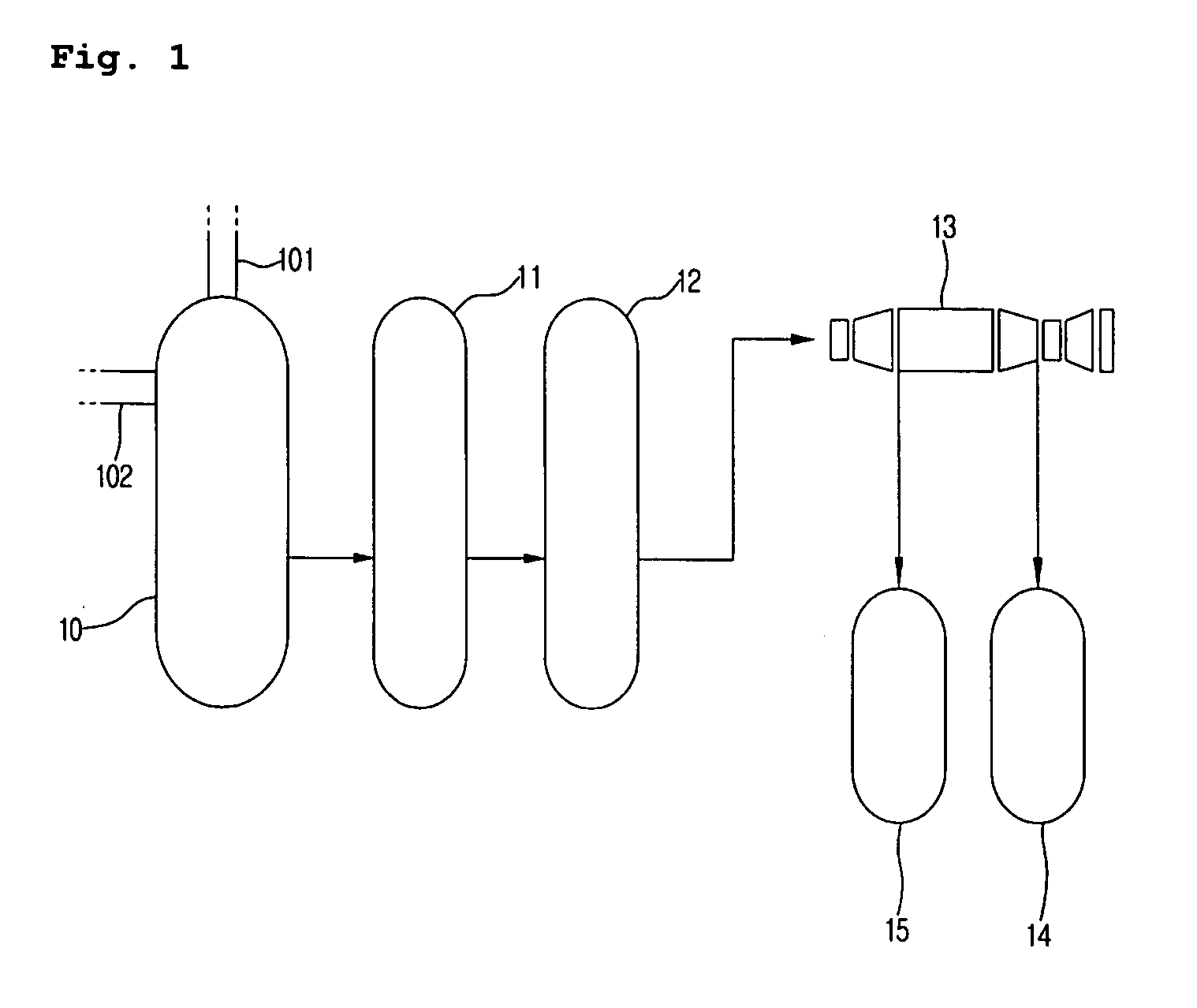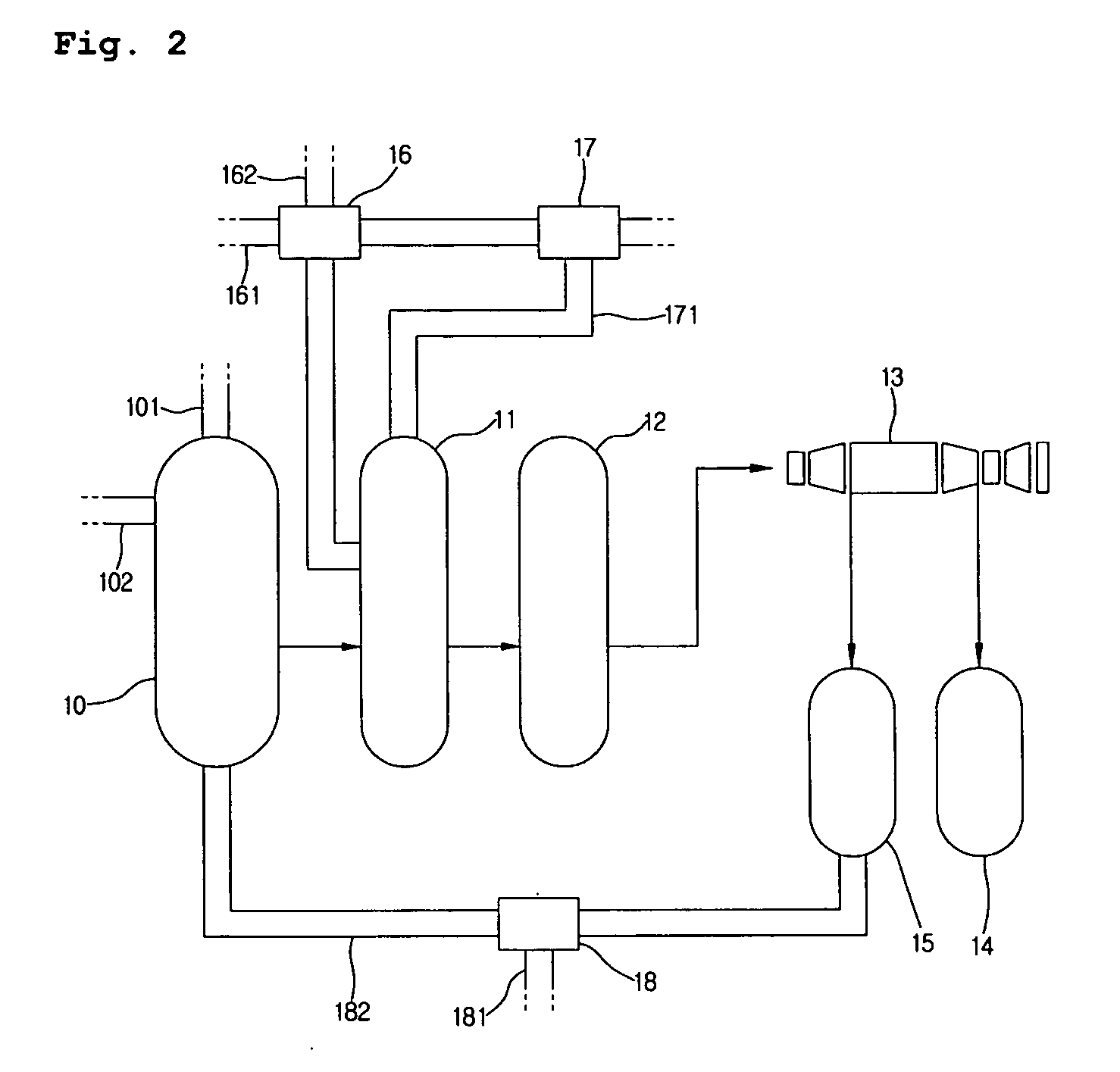Method for producing naphthalenedicarboxylic acid
a technology of naphthalenecarboxylic acid and naphthalenecarboxylic acid, which is applied in the preparation of carboxylic compounds, organic chemistry, chemistry apparatus and processes, etc., can solve the problems of difficult control of the properties of the final polymerization product, polyethylene naphthalate, and complex esterification process, and achieve high purity
- Summary
- Abstract
- Description
- Claims
- Application Information
AI Technical Summary
Benefits of technology
Problems solved by technology
Method used
Image
Examples
example 1
[0034]A titanium reactor having a capacity of 300 L, which is equipped with a cooler, a heater and a stirrer, was charged with reactants and catalyst, and an oxidation reaction was performed. The oxidation reactor was set to a temperature of 200° C. and a pressure of 20 kg / cm2, and the stirrer was rotated at 700 rpm to disperse the reactant gases. During the reaction, air was introduced in an amount of about 35.7 moles per mole of 2,6-dimethylnaphthalene until the initial amount of the gas being recycled was secured, and was introduced in an amount of 22 moles per mole of 2,6-dimethylnaphthalene after the system was stabilized. As a diluent gas, nitrogen was introduced in an amount of 1.8 moles per mole of 2,6-dimethylnaphthalene, and after stabilization, the amount of the discharged gas to be recycled was adjusted such that the oxygen content in the discharged gas was 4 to 6% by weight. After the steps of oxidation reaction followed by crystallization and solid-liquid separation, t...
examples 2 and 3
[0036]2,6-naphtheledicarboxylic acid was produced under the same conditions as in Example 1, except that the amounts of acetic acid and catalyst as well as the amount of the mother liquor that are recycled were varied. The compounds used for the reaction and the resulting products are presented in Table 1 and Table 2, respectively.
PUM
| Property | Measurement | Unit |
|---|---|---|
| temperature | aaaaa | aaaaa |
| weight ratio | aaaaa | aaaaa |
| weight ratio | aaaaa | aaaaa |
Abstract
Description
Claims
Application Information
 Login to View More
Login to View More - R&D
- Intellectual Property
- Life Sciences
- Materials
- Tech Scout
- Unparalleled Data Quality
- Higher Quality Content
- 60% Fewer Hallucinations
Browse by: Latest US Patents, China's latest patents, Technical Efficacy Thesaurus, Application Domain, Technology Topic, Popular Technical Reports.
© 2025 PatSnap. All rights reserved.Legal|Privacy policy|Modern Slavery Act Transparency Statement|Sitemap|About US| Contact US: help@patsnap.com


